GEMOLOGY
AUSTRALIA
Rains reveal 834-carat sapphire the size of 'small child's fist' in Queensland GemfieldsABC Capricornia / By Jasmine Hines
Posted Yesterday
Matt Betteridge recorded his find on video.
(Supplied: Betteridge Sapphires)
Matt Betteridge was on an evening walk when his eye caught a "glimmer sticking out of the dirt".
Key points:
Matt Betteridge found an 834-carat sapphire while specking in the central Queensland Gemfields
Gem hunters often look for stones after rain because it washes away some of the topsoil
The Gemmological Association of Australia said keeping the stone in one piece could make it more valuable
He quickly learnt it was not a random rock but a sparkling sapphire the size of a "small child's fist".
"The rain unearthed it that little bit … I thought it was going to be an average-sized stone until I couldn't pull it out," Mr Betteridge said.
"It seemed very heavy, popped out a nice ball, like a small child's fist, but very heavy like a lump of lead."
Mr Betteridge found the stone about 100 metres from the mining claim he lives on at the Reward fossicking land near Rubyvale in Queensland's Gemfields.
The region is one of the largest sapphire-bearing areas in the world.
Mr Betteridge found it late last month while out specking, the practice of walking around scanning the ground for stones.
After getting it valued, he realised it was an 834-carat sapphire, which he described as "very, very rare".
Footage of Mr Betteridge finding the sapphire, and repeating the term "holy dooley" in surprise, had by Saturday amassed more than 260,000 views on TikTok .
Matt and Amber Betteridge moved their family from the Burdekin to the Gemfields last year.
(ABC Capricornia: Erin Semmler)
Rain unearths gems
Gem hunters believe they have a better chance specking after rain because it washes away some topsoil.
The Central Highlands and Coalfields region has been inundated in recent days, with widespread rain and flash flooding hitting some communities.
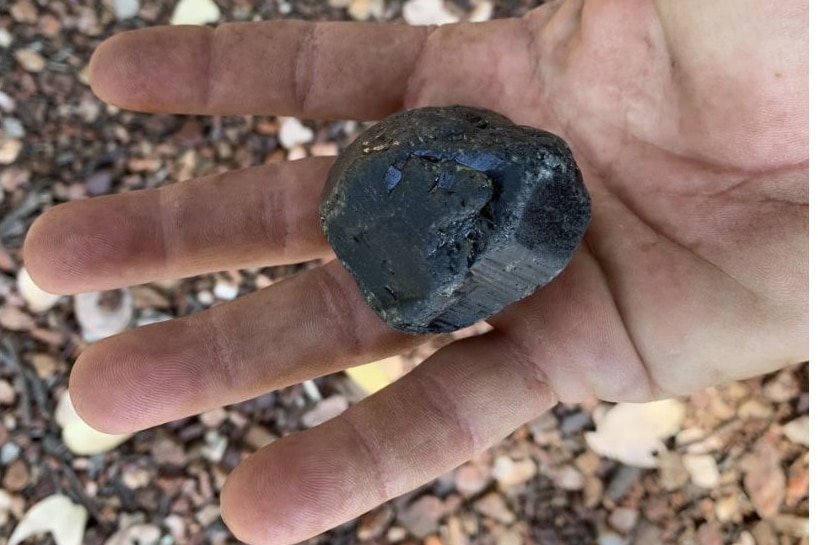
Rain unearths gems
Gem hunters believe they have a better chance specking after rain because it washes away some topsoil.
The Central Highlands and Coalfields region has been inundated in recent days, with widespread rain and flash flooding hitting some communities.
Mr Betteridge was pleasantly surprised by the find. (Supplied: Matt Betteridge)
The Bureau of Meteorology (BOM) said it recorded 194 millimetres of rain in Sapphire from October 16 to October 21.
Rubyvale recorded 182mm during the same period.
BOM said Rubyvale and Sapphire broke 13-year records for the amount of rainfall they received in the 24 hours to 9am on Wednesday.
Mr Betteridge said that, while Reward was only accessible by 4WD, people were still out searching for sapphires after the rain.
"All the speckers are out covering ground, even in-between the showers," he said.
Stone to be retained
Mr Betteridge sent the stone to a local gem cutter for an approximate valuation.
It is estimated to be worth $12,500.
While it contained some crystal that could be cut into jewellery, Mr Betteridge was keeping the stone in one piece to display its full size.
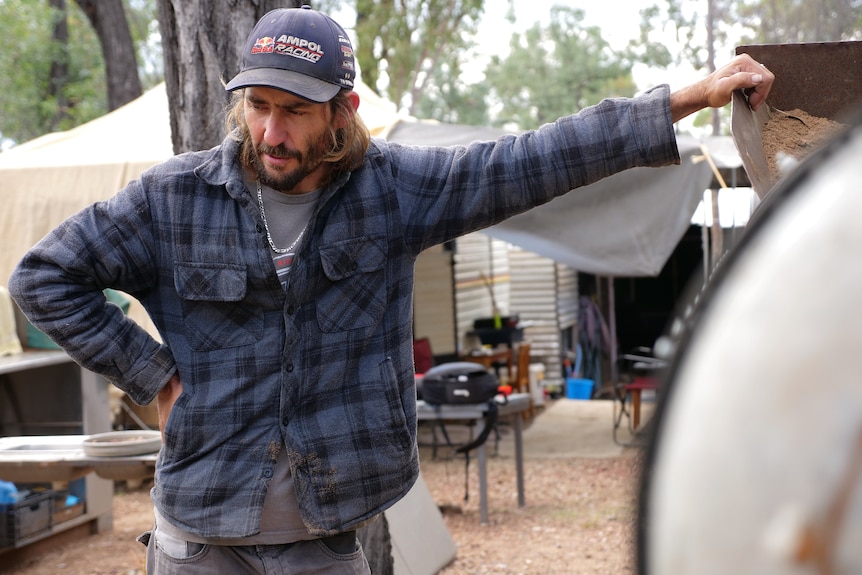
The Bureau of Meteorology (BOM) said it recorded 194 millimetres of rain in Sapphire from October 16 to October 21.
Rubyvale recorded 182mm during the same period.
BOM said Rubyvale and Sapphire broke 13-year records for the amount of rainfall they received in the 24 hours to 9am on Wednesday.
Mr Betteridge said that, while Reward was only accessible by 4WD, people were still out searching for sapphires after the rain.
"All the speckers are out covering ground, even in-between the showers," he said.
Stone to be retained
Mr Betteridge sent the stone to a local gem cutter for an approximate valuation.
It is estimated to be worth $12,500.
While it contained some crystal that could be cut into jewellery, Mr Betteridge was keeping the stone in one piece to display its full size.
Matt Betteridge mines precious gems on his claim in the Gemfields with his wife and son.
(ABC Capricornia: Erin Semmler)
The Gemmological Association of Australia's Helen Levonis, a jewellery valuer, said collectors often avoided cutting into large stones to produce smaller sapphires.
She said receiving anything more than a five-carat gemstone, "which is only a gram", was very rare in sapphires.
"When you get something … like an 830-carat sapphire, that's phenomenal," Ms Levonis said.
She said it would be a "shame" to cut it up.
"It could have far more value as the crystal than it will as cut-up pieces of sapphire," Ms Levonis said.
Ms Levonis said people were increasingly interested in conserving specimens like Mr Betteridge's stone.
"These sapphires grew hundreds of thousands of years ago," she said.
"There are no more coming … and we need to respect that when you see something that's 800 carat."
'Try your luck'
Mr Betteridge said the stone would be kept as a family heirloom and would be displayed during the region's annual Festival of Gems.
The Gemmological Association of Australia's Helen Levonis, a jewellery valuer, said collectors often avoided cutting into large stones to produce smaller sapphires.
She said receiving anything more than a five-carat gemstone, "which is only a gram", was very rare in sapphires.
"When you get something … like an 830-carat sapphire, that's phenomenal," Ms Levonis said.
She said it would be a "shame" to cut it up.
"It could have far more value as the crystal than it will as cut-up pieces of sapphire," Ms Levonis said.
Ms Levonis said people were increasingly interested in conserving specimens like Mr Betteridge's stone.
"These sapphires grew hundreds of thousands of years ago," she said.
"There are no more coming … and we need to respect that when you see something that's 800 carat."
'Try your luck'
Mr Betteridge said the stone would be kept as a family heirloom and would be displayed during the region's annual Festival of Gems.
Mr Betteridge previously found this parti sapphire while specking.
(Supplied: Betteridge Sapphires)
He also encouraged others interested in gem-hunting to visit the Gemfields.
"It was found on general fossicking grounds … everyone can have a go," Mr Betteridge said.
"Grab a fossicking ticket and camping permit and try your luck."
He also encouraged others interested in gem-hunting to visit the Gemfields.
"It was found on general fossicking grounds … everyone can have a go," Mr Betteridge said.
"Grab a fossicking ticket and camping permit and try your luck."
Queensland Gemfields communities in limbo 10 months on from mining moratorium
ABC Capricornia / By Jasmine Hines and Erin Semmler
Amber and Matt Betteridge quit their jobs and packed up their lives to mine, cut and sell precious stones in central Queensland's Gemfields.
They set up a business on a small piece of land in 2021 and went about hand mining sapphires with a pick and shovel.
But six weeks later, the state government announced a 12-month ban on new small-scale mining claims as part of the draft Queensland Resources Industry Development Plan (QRIDP) – meaning the Betteridge's could not explore further afield.
"I left a quite high-level job to come out here and do this for a living and then the rug was pulled out from under our feet with that," Ms Betteridge said.

What is the mining moratorium?
The November 2021 suspension was part of a Queensland Government proposal to remove mining claims from the Mineral Resources Act (1989) to introduce "a more effective" regulatory system for small-scale mining.
While the moratorium continues, no new mining claim applications are being processed but existing claims are still operating.
For The Gemfields, one of the largest sapphire-bearing areas in the world, an ongoing ban could have devastating impacts on the economy, culture and history of their towns, according to the Rubyvale Progress Association.
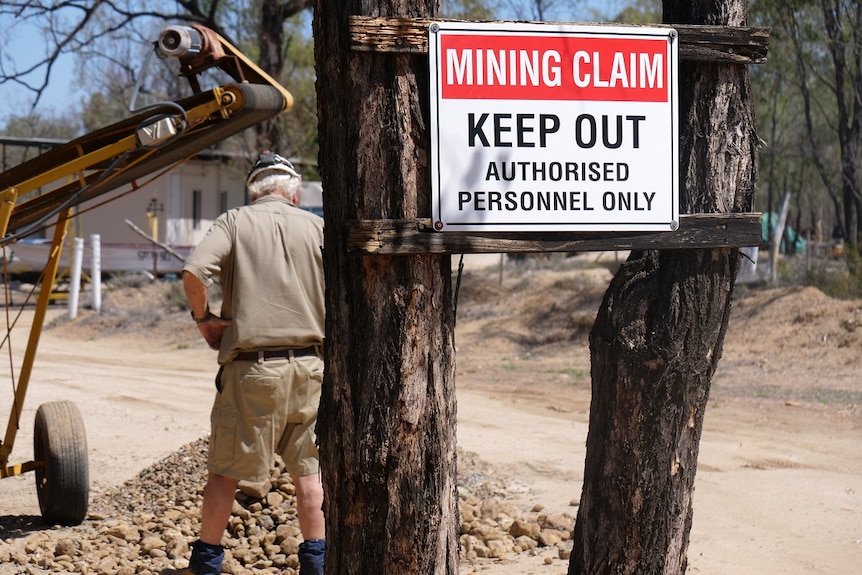
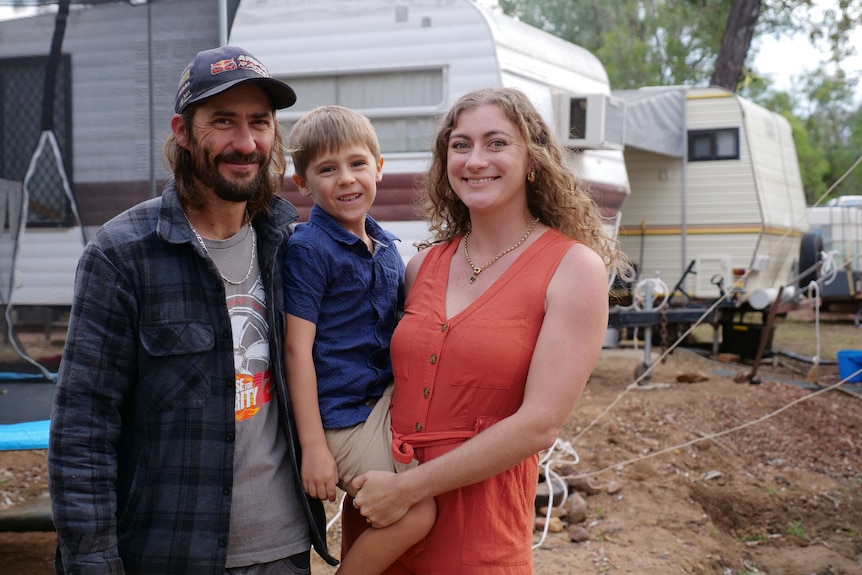
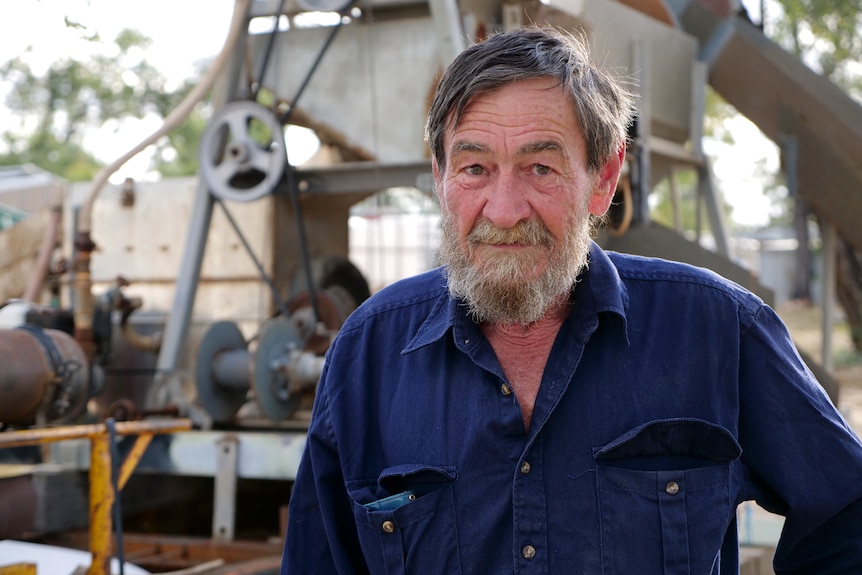
An uncertain community
Hand miner Murray Ungerer pegged his first claim in the region in 1986.
"[The temporary ban] has thrown a bit of fear into the community, we don't know where it's going with this," he said.
Last year, the Queensland Sapphire Miners Association said many thought the moratorium was introduced to crack down on people living on claims without mining them.
"At the moment we've got a major housing crisis, and a rental crisis, so to come in and say, 'Everyone go' – that's just not going to happen," Mr Ungerer said.
A Department of Resources spokesman said it had looked at more than 200 written submissions and met with several small-scale mining associations since the moratorium was introduced.

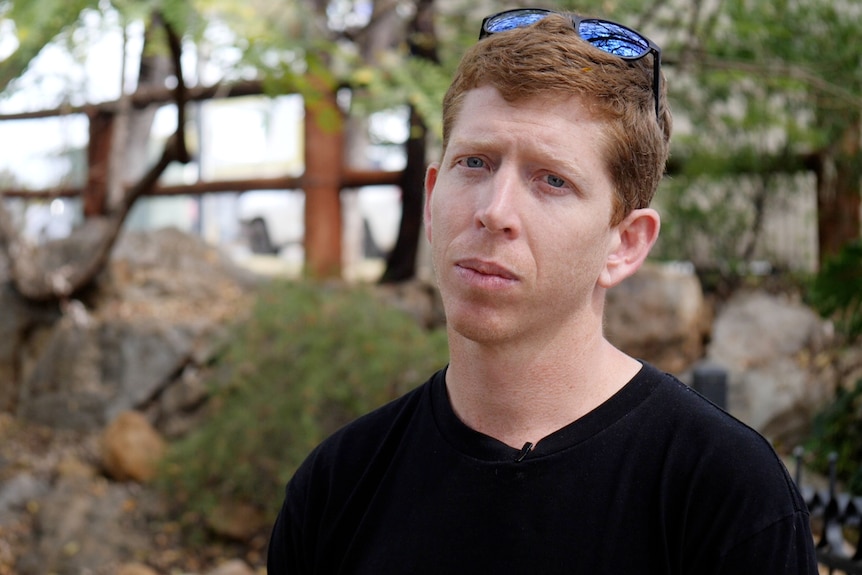
'Living mining culture'
Mr Ungerer said a decision to remove small scale mining claims from the Act would have dire consequences.
"If we do that, a mining lease, that still puts us in the same as oil and gas and petroleum and everything else," Mr Ungerer said.
"That would be absolutely cost prohibitive to any of these people and people would just leave in droves because they just couldn't afford to be here any longer.
"They need to come up with some sort of a tenure arrangement where it allows us security as to where we live, and to keep on mining."
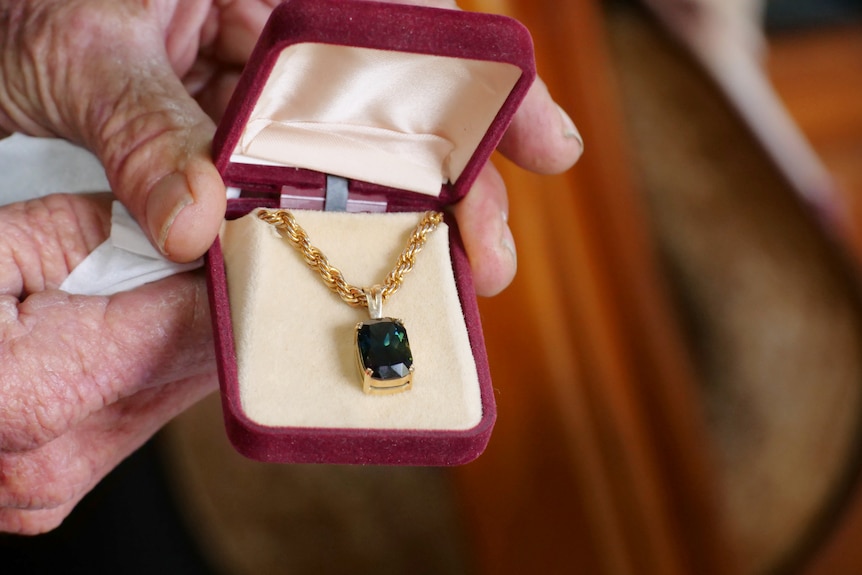
ABC Capricornia / By Jasmine Hines and Erin Semmler
Posted Fri 30 Sep 2022
Amber and Matt Betteridge quit their jobs and packed up their lives to mine, cut and sell precious stones in central Queensland's Gemfields.
They set up a business on a small piece of land in 2021 and went about hand mining sapphires with a pick and shovel.
But six weeks later, the state government announced a 12-month ban on new small-scale mining claims as part of the draft Queensland Resources Industry Development Plan (QRIDP) – meaning the Betteridge's could not explore further afield.
"I left a quite high-level job to come out here and do this for a living and then the rug was pulled out from under our feet with that," Ms Betteridge said.
Mr Betteridge mines precious gems on his claim in The Gemfields.
(ABC Capricornia: Erin Semmler)
What is the mining moratorium?
The November 2021 suspension was part of a Queensland Government proposal to remove mining claims from the Mineral Resources Act (1989) to introduce "a more effective" regulatory system for small-scale mining.
While the moratorium continues, no new mining claim applications are being processed but existing claims are still operating.
For The Gemfields, one of the largest sapphire-bearing areas in the world, an ongoing ban could have devastating impacts on the economy, culture and history of their towns, according to the Rubyvale Progress Association.
The Gemfields is one of the largest sapphire bearing areas in the world.
(ABC Capricornia: Erin Semmler)
The state government has given no guarantee the ban will lift in November, and miners who rely on the industry said they still feel in the dark about their future.
"It's been a difficult time because we don't actually know how long we can live in this lifestyle for and we gave everything up to come out here and do it," Ms Betteridge said.
While the relaxing atmosphere of the Gemfields has been a welcome change from their busy north Queensland lifestyle, the Betteridge family is frustrated their plans to expand have been halted.
"Nothing can happen now," Mr Betteridge said.
The state government has given no guarantee the ban will lift in November, and miners who rely on the industry said they still feel in the dark about their future.
"It's been a difficult time because we don't actually know how long we can live in this lifestyle for and we gave everything up to come out here and do it," Ms Betteridge said.
While the relaxing atmosphere of the Gemfields has been a welcome change from their busy north Queensland lifestyle, the Betteridge family is frustrated their plans to expand have been halted.
"Nothing can happen now," Mr Betteridge said.
Mr and Mrs Betteridge moved their family from the Burdekin to The Gemfields in 2021.(ABC Capricornia: Erin Semmler)
A Queensland Government spokesman said it had "consulted extensively" since the moratorium was introduced but a decision on whether it will continue "has not yet been made".
"While the government continues to refine options for small-scale mining reform, the moratorium will remain in place," it said.
If a decision is made to change legislation, it said options "may" be presented on paper in 2023 for public consultation.
A Queensland Government spokesman said it had "consulted extensively" since the moratorium was introduced but a decision on whether it will continue "has not yet been made".
"While the government continues to refine options for small-scale mining reform, the moratorium will remain in place," it said.
If a decision is made to change legislation, it said options "may" be presented on paper in 2023 for public consultation.
Murray Ungerer says the 12-month mining moratorium has "thrown fear into the community". (ABC Capricornia: Erin Semmler)
An uncertain community
Hand miner Murray Ungerer pegged his first claim in the region in 1986.
"[The temporary ban] has thrown a bit of fear into the community, we don't know where it's going with this," he said.
Last year, the Queensland Sapphire Miners Association said many thought the moratorium was introduced to crack down on people living on claims without mining them.
"At the moment we've got a major housing crisis, and a rental crisis, so to come in and say, 'Everyone go' – that's just not going to happen," Mr Ungerer said.
A Department of Resources spokesman said it had looked at more than 200 written submissions and met with several small-scale mining associations since the moratorium was introduced.
Mr Ungerer pegged his first mining claim in 1986. (ABC Capricornia: Erin Semmler)
It has committed $200,000 to a planning study with the Central Highlands Regional Council.
"The department is currently finalising its next steps and will provide further advice to the small-scale mining sector, and the communities that host them, in the coming months," he said.
Rubyvale Progress Association vice president Mitchell Brown said he understood changes needed to be made to ensure miners were fulfilling the obligations of their resource authority.
"There's nothing wrong with putting in some things in our framework to help enhance what we're doing, not diminish it," he said.
"They probably are realising now that they may have completely underestimated how much we value this lifestyle and protecting small scale mining."
It has committed $200,000 to a planning study with the Central Highlands Regional Council.
"The department is currently finalising its next steps and will provide further advice to the small-scale mining sector, and the communities that host them, in the coming months," he said.
Rubyvale Progress Association vice president Mitchell Brown said he understood changes needed to be made to ensure miners were fulfilling the obligations of their resource authority.
"There's nothing wrong with putting in some things in our framework to help enhance what we're doing, not diminish it," he said.
"They probably are realising now that they may have completely underestimated how much we value this lifestyle and protecting small scale mining."
Mr Brown wrote a submission to the state government on behalf of the Rubyvale Progress Association.(ABC Capricornia: Erin Semmler)
'Living mining culture'
Mr Ungerer said a decision to remove small scale mining claims from the Act would have dire consequences.
"If we do that, a mining lease, that still puts us in the same as oil and gas and petroleum and everything else," Mr Ungerer said.
"That would be absolutely cost prohibitive to any of these people and people would just leave in droves because they just couldn't afford to be here any longer.
"They need to come up with some sort of a tenure arrangement where it allows us security as to where we live, and to keep on mining."
Mr Ungerer hand mines precious gemstones in Queensland's Central Highlands.
(ABC Capricornia: Erin Semmler)
Mr Brown is hopeful the outcome will consider all the communities' concerns.
"We're working very hard to make sure that our voices get heard to protect our way of life here, it's so important," he said.
"In Australia we have historic mining towns and the tourism associated with that – this is living mining culture right now and if it's done right we can continue that for hundreds of years."
Mr Brown is hopeful the outcome will consider all the communities' concerns.
"We're working very hard to make sure that our voices get heard to protect our way of life here, it's so important," he said.
"In Australia we have historic mining towns and the tourism associated with that – this is living mining culture right now and if it's done right we can continue that for hundreds of years."
No comments:
Post a Comment